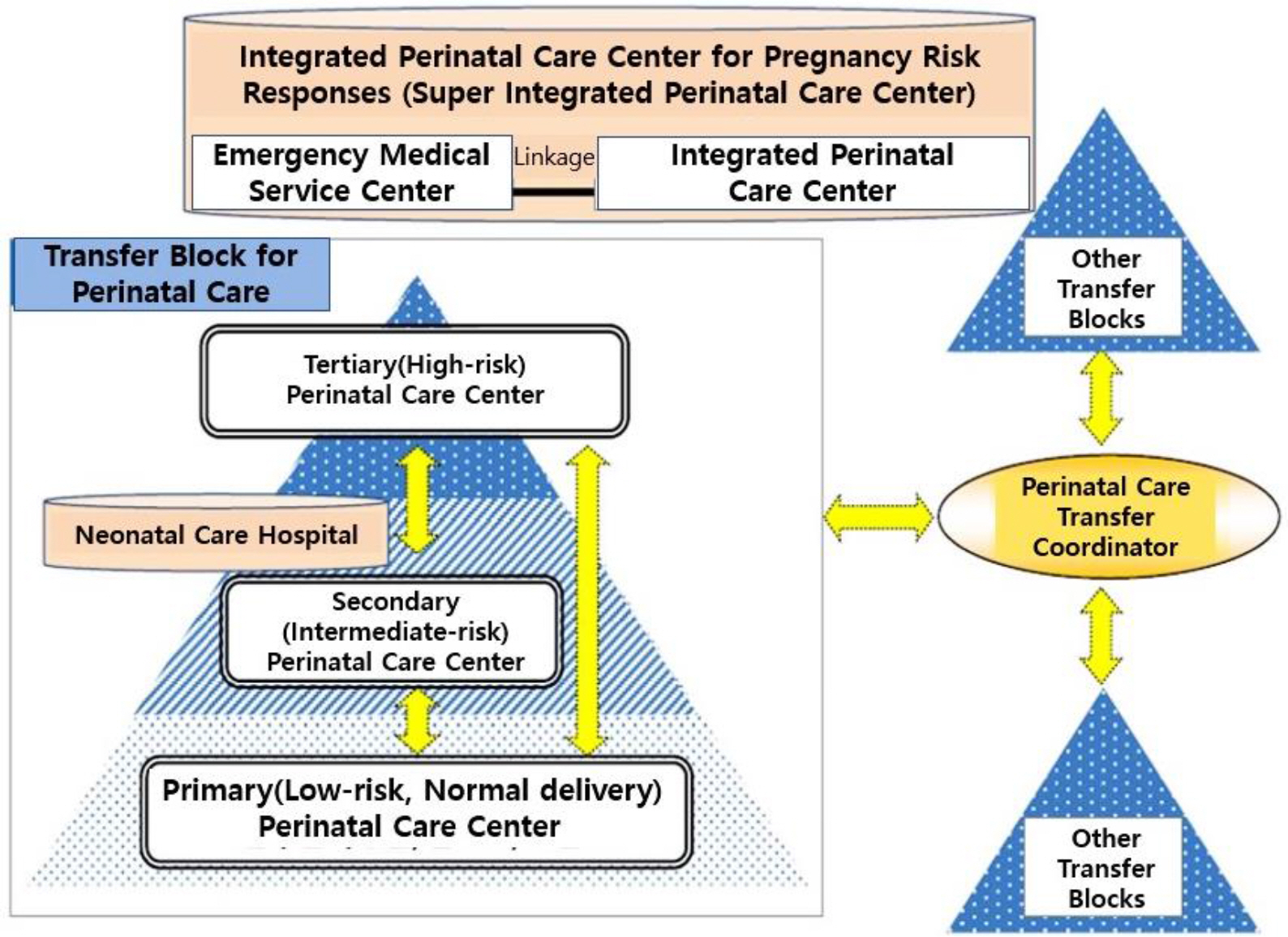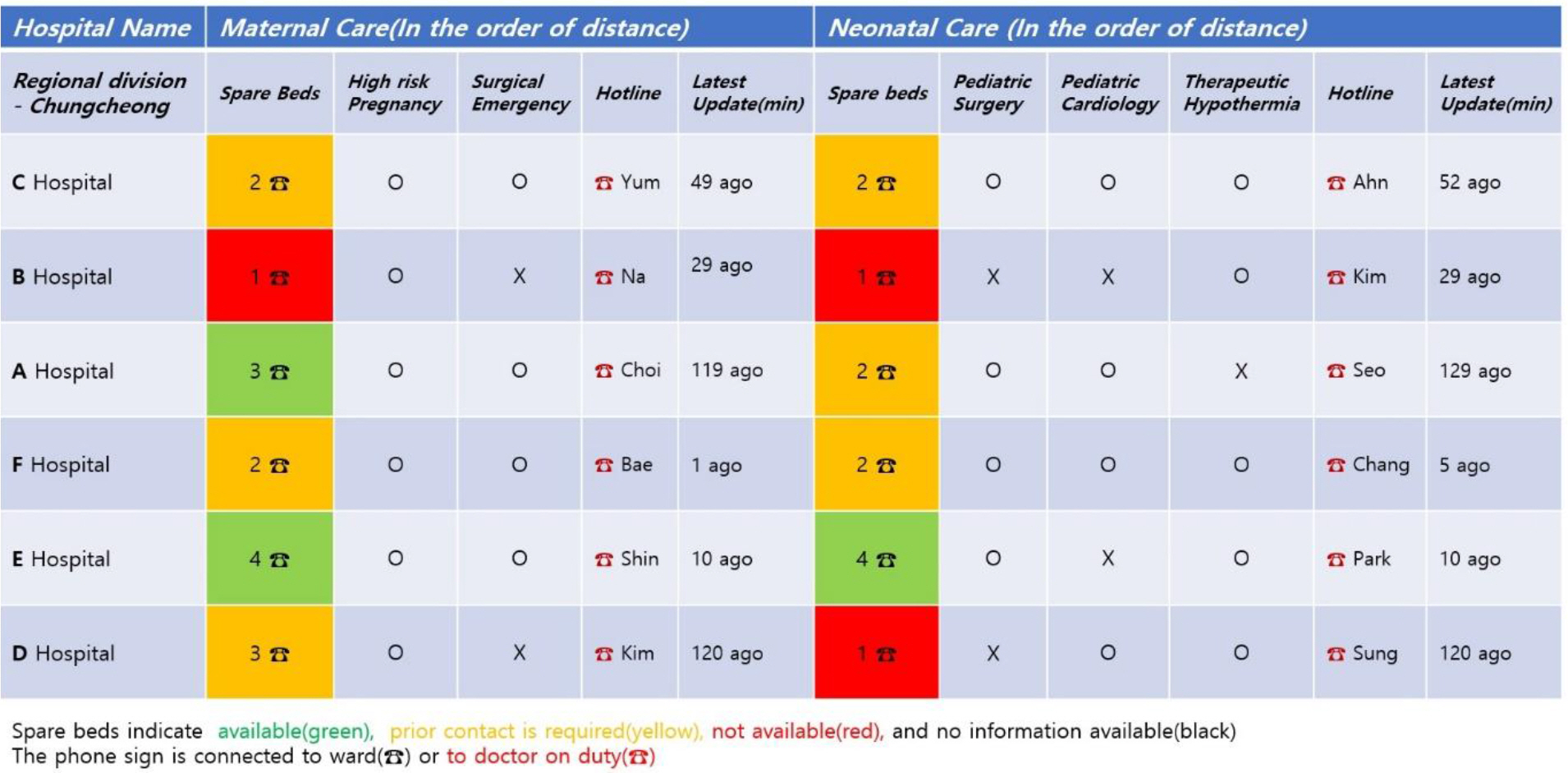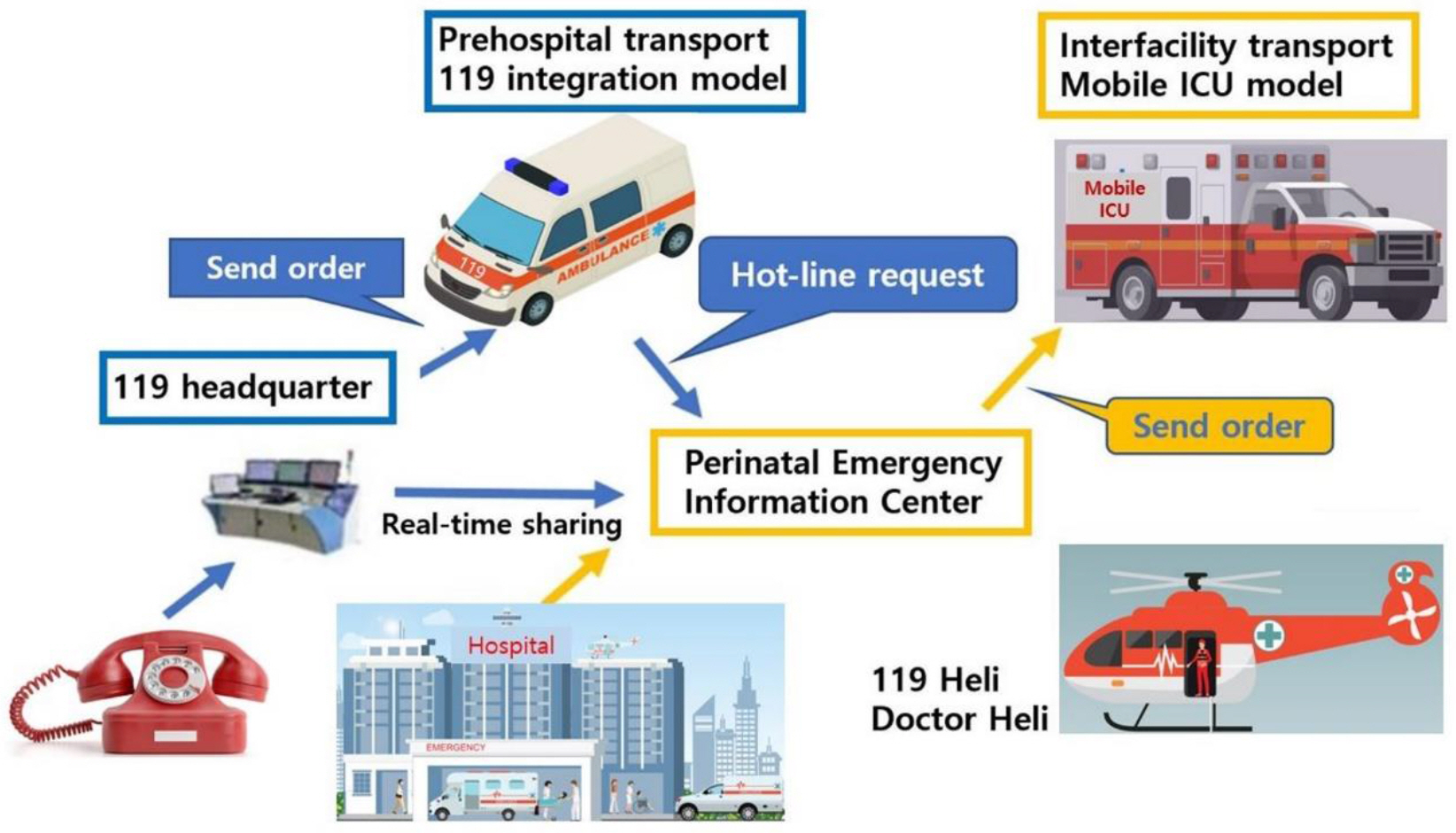J Korean Soc Matern Child Health.
2022 Jan;26(1):10-19. 10.21896/jksmch.2022.26.1.10.
Plan for Establishing a Safe Perinatal Transport System
- Affiliations
-
- 1Department of Pediatrics, Jeonbuk National University School of Medicine, Jeonju, Korea
- KMID: 2525367
- DOI: http://doi.org/10.21896/jksmch.2022.26.1.10
Abstract
- The collapse of perinatal healthcare is inevitable considering demographic factors and factors associated with medical resources due to the rapid decrease in the fertility rate in South Korea. In order to maintain the perinatal healthcare system, an appropriate healthcare delivery system must be established, but even the regional hospitals are facing a situation in which medical care is disabled due to a shortage of workforce. Government support is required to prevent the collapse of perinatal healthcare as public healthcare, emergency healthcare, and national essential healthcare system. In reality, it is necessary to strengthen perinatal healthcare through regionalization and to establish a maternal and child transport system. However, there are no guidelines for the perinatal transport system in South Korea, which also lacks professionalism, with a focus on the simple transportation of patients. Therefore, by integrating the transport systems of advanced countries and domestic efforts to improve transport systems, a realistic perinatal transport system establishment plan is proposed as follows. In order to strengthen the perinatal healthcare center under legal and institutional support, a professional workforce equivalent to that of the emergency healthcare center is ensured to organize a specialized perinatal transport team, and a perinatal emergency information center is established to form a safe transport linkage system. The perinatal emergency information center, which provides information on perinatal healthcare, linking and evaluating transportation between hospitals, should be incorporated into the emergency healthcare system, playing a pivotal role in the perinatal emergency healthcare management system. In addition, a dedicated transport team for perinatal healthcare should be formed for each region, transport guidelines for transport vehicles and equipment should be established, and legal and financial support should be provided to ensure safe perinatal healthcare transport. The prehospitalization level perinatal transport is configured as an integrated model of the 119 paramedics, aiming at quick transport. A team of perinatal special paramedics should be organized for each base to transport patients by special vehicles, and information from the perinatal emergency information center should be used to select a transfer hospital and to receive medical guidance from a perinatal care physician during transport between hospitals. Transport between hospitals aims at safe transport with triangular transport. A perinatal transport team is in charge of transport between hospitals, and a specialist is on board in a special ambulance to provide medical care during transport between hospitals. Support from the government and local governments is absolutely necessary to strengthen the perinatal healthcare center and establish a perinatal transfer system, which must be realized through a pilot project with fee support.
Figure
Reference
-
Bureau of Social Welfare and Public Health. Perinatal medicine [Internet]. Tokyo (Japan): Bureau of Social Welfare and Public Health;2021. [cited 2021 Nov 18]. Available from: https://www.fukushihoken.metro.tokyo.lg.jp/iryo/kyuukyuu/syusankiiryo/syusankiiryotoha.html.Chang YS. Regionalization of neonatal intensive care in Korea. Korean J Pediatr. 2011. 54:481–8.Choi I., Kim JK., Kim SJ., Cho SC., Kim IN. Satisfaction levels and factors influencing satisfaction with use of a social app for neonatal and pediatric patient transfer information systems: a questionnaire study among doctors. JMIR Med Inform. 2016. 4:e26.Insoft RM., Schwartz HP., Romito J., Alexander SN; American Academy of Pediatrics. Guidelines for air and ground transport of neonatal and pediatric patients. 4th ed.Elk Grove Village (IL): American Academy of Pediatrics;2016.Kim JK., Shin SM., Choi YS., Yum SK., Kim HH., Na SH, et al. A study on the establishment of a safe perinatal transport system for connecting the perinatal care center. Sejong (Korea): Ministry of Health and Welfare;2021.Kim TH., Song KJ., Shin SD., Ro YS., Hong KJ., Park JH. Effect of Specialized critical care transport unit on short-term mortality of criticallv ILL patients undergoing interhospital transport. Prehosp Emerg Care. 2020. 24:46–54.Ministry of Health and Welfare. Support project for vulnerable areas for delivery 2021 [Internet]. Sejong (Korea): Ministry of Health and Welfare;2021. [cited 2021 Nov 18]. Available from: http://www.mohw.go.kr/react/gm/sgm0701vw.jsp?PAR_MENU_ID=13&MENU_ID=1304080401&CONT_SEQ=365347.Park JM., Cho KJ. A study on the current status of prehospital emergency care for pregnant women, knowledge related to pregnant women, and self-confidence in emergency care among paramedics. Korean J Emerg Med Ser. 2020. 24:133–53.Shin SM., Chang YS., Chang MY., Lee JH., Kim JK., Oh SY, et al. A study on the operation of professional human resources and institutional support for maternal and child care support projects. Sejong (Korea): Ministry of Health and Welfare;2021.Statistics Korea. Population pyramid [Internet]. Daejeon (Korea): Statistics Korea;2021. [cited 2021 Nov 18]. Available from: https://kosis.kr/visual/populationKorea/experienceYard/populationPyramid.do?menuId=M_3_2.Stroud MH., Trautman MS., Meyer K., Moss MM., Schwartz HP., Bigham MT, et al. Pediatric and neonatal interfacility transport: results from a national consensus conference. Pediatrics. 2013. 132:359–66.
Article
- Full Text Links
- Actions
-
Cited
- CITED
-
- Close
- Share
- Similar articles
-
- Perinatal Care Center System for High Risk Pregnancy and Newborn in Japan
- Regionalization of neonatal care and neonatal transport system
- Regionalization of emergency medical system and re-establishment of regional emergency medical plan
- Review of the Impact of Parental Mental Illness on Infant Development and Intervention Plan
- Establishing an Emergency Maternal Transport Control Center




